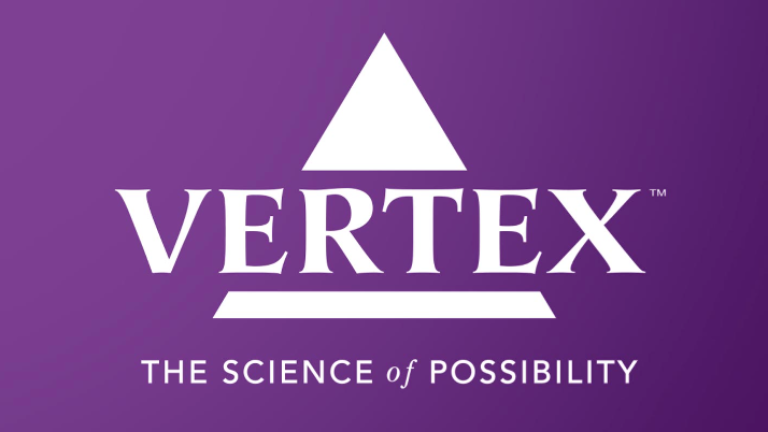预约演示
更新于:2025-05-07
PEC Encap
更新于:2025-05-07
概要
基本信息
原研机构 |
在研机构- |
非在研机构 |
权益机构- |
最高研发阶段终止临床1/2期 |
首次获批日期- |
最高研发阶段(中国)- |
特殊审评- |
登录后查看时间轴
关联
3
项与 PEC Encap 相关的临床试验NCT04678557
An Open-Label Phase 1/2 Study to Evaluate the Safety, Engraftment, and Efficacy of VC-01™Combination Product in Subjects With Type 1 Diabetes Mellitus [T1DM]
VC01-103 will evaluate an experimental combination product, cell replacement therapy intended to provide a functional cure to subjects with Type 1 Diabetes.
开始日期2019-06-25 |
申办/合作机构 |
NCT02939118
A One-Year, Multicenter, Observational, Follow-up Safety Study in Subjects Previously Implanted With VC-01™ Combination Product
The purpose of this trial is to evaluate the long-term safety in subjects previously implanted with VC-01™ combination product.
开始日期2016-11-07 |
申办/合作机构 |
NCT02239354
A Prospective, Multicenter, Open-Label, First-in-Human Phase 1/2 Study With Two Cohorts to Evaluate the Safety, Tolerability, and Efficacy of Various Doses of VC-01™ Combination Product in Subjects With Type 1 Diabetes Mellitus
The purpose of this trial is to test if VC-01™ combination product can be implanted subcutaneously in subjects with Type 1 Diabetes and maintained safely for two years. It will also test if VC-01 is an effective treatment for subjects with Type 1 Diabetes.
开始日期2014-09-01 |
申办/合作机构  ViaCyte, Inc. ViaCyte, Inc. [+1] |
100 项与 PEC Encap 相关的临床结果
登录后查看更多信息
100 项与 PEC Encap 相关的转化医学
登录后查看更多信息
100 项与 PEC Encap 相关的专利(医药)
登录后查看更多信息
7
项与 PEC Encap 相关的文献(医药)2023-01-01·Journal of environmental science and health. Part. B, Pesticides, food contaminants, and agricultural wastes
Adsorption-desorption characteristics of atrazine on soil and vermicompost prepared with different ratios of raw materials.
Article
作者: Zhang, Lei ; Zhang, Yan ; Xu, Lixin ; Zhang, Luwen ; Chen, Yuxiang
2018-10-01·Letters in Applied Microbiology4区 · 生物学
Comparative genomics ofVibrio choleraeO1 isolated from cholera patients in Bangladesh
4区 · 生物学
Article
作者: Sultana, R. ; Begum, A. ; Leekitcharoenphon, P. ; Hendriksen, R.S. ; Dalsgaard, A. ; Jensen, P.K.M. ; Hossain, Z.Z.
2015-10-01·Stem Cells Translational Medicine2区 · 医学
Insulin-Producing Endocrine Cells Differentiated In Vitro From Human Embryonic Stem Cells Function in Macroencapsulation Devices In Vivo
2区 · 医学
ArticleOA
作者: Srijemac, Robert ; Agulnick, Alan D. ; Cesario, Rosemary M. ; Wilson, Alistair Z. ; Ambruzs, Dana M. ; Bhoumik, Anindita ; Kroon, Evert J. ; Kelly, Jonathan R. ; Kerr, Justin ; D'Amour, Kevin A. ; Payne, Janice K. ; Haakmeester, Carl ; Frazier, Mauro A. ; Moorman, Mark A.
7
项与 PEC Encap 相关的新闻(医药)2024-07-21
·奇点网
*仅供医学专业人士阅读参考在阿尔茨海默病(AD)的治疗中,及早发现淀粉样蛋白β(Aβ)和磷酸化tau蛋白十分重要。淀粉样蛋白示踪剂的正电子发射断层扫描(PET)能够量化大脑中的Aβ负担,但是由于成本较高,可及性有限。相比之下,基于血液的生物标志物具有应用于大规模筛查的潜力。研究表明,特定pTau亚型(如pTau181和pTau217)水平升高与淀粉样蛋白PET扫描和疾病进展相关。结合血浆pTau217和Aβ42/Aβ40有望检测从临床前到早期AD阶段的淀粉样蛋白沉积。来自伊利诺伊大学芝加哥分校的研究团队讨论了血浆pTau217和血浆Aβ42/Aβ40预测PET结果的潜力。研究结果表明,血浆pTau217比率(pTau217R)结合血浆Aβ42/Aβ40的模型可以有效预测临床前和早期AD的脑淀粉样蛋白水平和状态,广谱淀粉样蛋白-PET Centiloid(CL)预测上限达到89.1CL。基于pTau217R的模型可显著减少PET扫描次数,最多可减少78.6%,显著减少时间成本和经济成本,降低患者负担。研究发表在Alzheimer’s & Dementia上。研究模型的开发和验证使用来自三个不同临床试验队列的数据,涵盖了从临床前到早期AD阶段。训练队列来自AHEAD 3-45和ClarityAD研究,共纳入904名受试者,包括620名无认知障碍者(CUI)、284名轻度认知障碍者(MCI)和98名轻度AD患者。验证队列为VC-1和VC-2,VC-1包括622名CUI患者,VC-2包括320名MCI患者和37名轻度AD患者。患者特征如下图所示。患者基线特征初步分析显示,三个队列的APOE4状态、年龄和性别分布存在显著差异与其他队列相比,VC-2患者基线简易精神状态检查(MMSE)评分较低。研究人员建立了多种预测PET CL值的模型,包含Aβ42/Aβ40、pTau217R以及两者结合,所有模型均包含人口统计学变量(年龄、性别)。研究使用贝叶斯线性套索回归(BLLR)和随机梯度提升(SGB)算法,分析结果显示SGB算法相关性更高。模型性能总结在模型性能方面,基于血浆Aβ42/Aβ40的模型在VC-1和VC-2中的R²值分别为0.3和0.16,而血浆pTau217R的加入显著提高了模型预测性能,R2值提升至0.63和0.66。并且,pTau217R和Aβ42/Aβ40的组合模型显著扩大了CL预测范围,从Aβ42/Aβ40模型的20.8至51.7CL扩大到8至89.1CL。在VC-1队列中,Aβ42/Aβ40模型的曲线下面积AUROC为77.5%-83.5%,基于pTau217R的模型准确性更高,AUROC为89.9%-93.9%;在VC-2队列中,Aβ42/Aβ40模型的AUROC为68.3%-78.1%,pTau217R模型的AUROC为90.6%-93.8%;pTau217R与Aβ42/Aβ40组合的预测模型准确性进一步增加,但是同样随着CL阈值增加而准确性下降。不同CL阈值下预测准确性基于血液生物标志物的CL预测模型具有减少淀粉样蛋白PET扫描的潜力。假设敏感度固定为95%,在CL阈值为15至90之间时,组合生物标志物模型在VC-1中可以减少61.7%至78.6%的PET扫描次数,在VC-2中可以减少62.7%至70.9%的PET扫描次数。总的来说,研究人员证实了血浆pTau217R可有效预测脑淀粉样蛋白水平,开发的基于血浆pTau217R和血浆Aβ42/Aβ40两种标志物组合的CL模型可以提高淀粉样蛋白检测的灵敏度,减少不必要的PET扫描,并扩大临床实用性。参考文献:Devanarayan V, Doherty T, Charil A, et al. Plasma pTau217 predicts continuous brain amyloid levels in preclinical and early Alzheimer's disease[J]. Alzheimer's & Dementia, 2024.本文作者丨王雪宁
临床结果临床研究
2022-07-18
1922年,班廷等人发现并提纯了胰岛素,将其成功应用于糖尿病的治疗,这一发现拯救了千千万万的糖尿病患者,尤其是1型糖尿病(T1D)患者。然而,对于1型糖尿病患者来说,只能通过胰岛素治疗来维持,尚无其他任何办法解决导致疾病的根本问题——胰岛细胞无法自己产生胰岛素。
近年来,随着干细胞技术的成熟和应用,基于人多能干细胞诱导分化而来的胰岛细胞的胰岛细胞替代疗法开始进行人体临床试验,有望实现1型糖尿病的功能性治愈,让患者不再依赖注射胰岛素。
2022年7月11日,Vertex Pharmaceuticals 宣布将以3.2亿美元现金收购 ViaCyte 公司,收购后,Vertex 将拥有 ViaCyte 的三款治疗糖尿病的细胞疗法在研管线,其在人了干细胞系、干细胞分化领域的知识产权、细胞疗法 GMP 设备,以及其与 CRISPR Therapeutics 合作获得的新型低免疫干细胞资产,进一步补充自身在糖尿病功能性治愈领域的领先地位。
ViaCyte 与 CRISPR Therapeutics 合作开发一款基于基因编辑的干细胞疗法(VCTX210)来治疗1型糖尿病。今年2月份,他们在1期临床试验中完成了首例患者给药,该1期临床试验预计在今年12月完成。VCTX210 使用 CRISPR-Cas9 基因编辑技术敲除了 B2M、PD-L1、HLA-E 基因,从而避免细胞转移后的免疫排斥。外界认为,VCTX210 疗法是 Vertex 公司决定收购 ViaCyte 的关键驱动力。
ViaCyte 公司是一家干细胞疗法公司,通过重编程技术,将人类干细胞诱导分化为产生胰岛素的细胞,封装到微型装置中,然后一直到糖尿病患者胰腺内,并在胰腺内再生胰岛细胞、产生胰岛素。
ViaCyte 公司发明了一种可重复的专利技术方法,能够将期专有的人多能干细胞(CyT49)分化为胰腺内胚层细胞(也称为胰腺前体细胞、PEC-01细胞)。整个过程模拟人类胰腺的自然发育,在每个步骤中,通过添加特定类型和数量的生长因子、生长培养基和补充剂,引导多能干细胞分化为PEC-01细胞,整个细胞制造过程约为30天。
2021年11月,ViaCyte 公司在 Cell Stem Cell 和 Cell Reports Medicine 期刊上发表 了正在进行中的人体1/2期临床试验(VC02-101, NCT03163511)数据,数据表明,VC-02 疗法可以在患有严重1型糖尿病的患者中产生胰岛素。在该研究中,植入 ViaCyte 的 PEC-Direct 设备的17名患者中,部分患者在植入后六个月就检测到了阳性 C 肽(胰岛素生物标志物)。数据还表明,干细胞来源的胰腺内胚层细胞可以分化为产生胰岛素的胰岛细胞。
早在2019年,Vertex 公司就斥资9.5亿美元收购了 Semma Therapeutics,从而获得了其开发的基于干细胞的胰岛细胞替代疗法——VX-880。
2021年10月18日,Vertex 公司宣布,一名严重的1型糖尿病的患者在接受 VX-880 的干细胞来源的完全分化的胰岛细胞替代疗法后,实现了胰岛细胞功能的“稳健恢复”,这些恢复的胰岛细胞可以让患者调节胰岛素甚至自己产生胰岛素,每天的胰岛素使用量减少91%,血糖控制得到显著改善。 该疗法的安全性与典型的免疫抑制剂治疗相似,且没有报告与治疗相关的严重副作用。VX-880 也是目前处于临床阶段的众多糖尿病细胞疗法中进展最为迅速的。
此外,Vertex 公司还在开发其封装胰岛细胞的疗法,这一疗法将无需对患者进行免疫抑制,并计划在今年向FDA提交临床试验申请。
参考资料:https://viacyte.com/pipeline/https://www.genengnews.com/metabolic-disorders/diabetes/vertex-to-acquire-viacyte-for-320m-growing-diabetes-cell-therapy-pipeline/
内容来源于网络,如有侵权,请联系删除。

细胞疗法并购合作免疫疗法
2022-07-11
Vertex Pharmaceuticals is developing a cell therapy for type 1 diabetes that replaces the insulin-producing cells lost to the chronic condition. In paying $320 million to acquire ViaCyte, Vertex is getting its hands on the company that was the first to demonstrate this feat in clinical testing.
Boston-based Vertex framed the acquisition agreement announced Monday as complementary to its own research efforts. Privately held ViaCyte brings additional tools, technologies and assets, Vertex CEO Reshma Kewalramani said in a prepared statement.
In type 1 diabetes, the immune system destroys the islet cells in the pancreas that produce insulin. Patients require regular doses of insulin, either by injection or infused from an insulin pump, to maintain levels of the glucose-regulating hormone.
Vertex’s type 1 diabetes cell therapy candidate, VX-880, is comprised of islet cells that are grown in a lab. These cells are infused into a patient along with immunosuppressive therapies to keep the immune system from rejecting them. During the annual meeting of the American Diabetes Association last month, Vertex presented data from two patients who were given half of the targeted dose of cells. Both patients showed changes in blood glucose. One patient achieved insulin independence 270 days after dosing while the other showed a 30% reduction in infused or injected insulin at day 150.
Vertex added VX-880 to its pipeline in 2019, paying $950 million up front to acquire startup Semma Therapeutics. At the time of the deal, Semma was preclinical. The Phase 1/2 study underway has a targeted enrollment of 17 patients. It was cleared to resume last week with the resolution of a clinical hold placed on the study in May; the FDA said at the time that there was insufficient information to support dose escalation.
San Diego-based ViaCyte has three programs in development for type 1 diabetes. The most advanced is VC-02, stem cell-derived islet cells that are housed in an implantable pouch. This pouch connects with a patient’s blood vessels, enabling them to interact with the transplanted cells. In June 2021, ViaCyte reported clinical data at nine months indicating that transplanted cells were producing insulin in the first patient treated with this approach.
Like the Vertex therapy, VC-02 requires immunosuppressive drugs to prevent rejection. A second ViaCyte program, VC-01, could reduce this risk with a pouch designed to prevent the patient’s immune cells from directly coming in contact with the transplanted islet cells. ViaCyte presented additional data for both programs at the American Diabetes Association’s meeting in June. The results are important for showing the potential of cell therapy in type 1 diabetes, according to William Blair analyst Raju Prasad.
“Together, the data demonstrated—for the first time in humans—that implanted pancreatic progenitor cells can functionally differentiate into mature, glucose-responsive, (endogenous) insulin-producing islet cells,” Prasad wrote in a note sent to investors Monday morning.
Vertex’s main interest in ViaCyte might be its third program, which could eliminate the need for immunosuppressive therapy. The cells in this experimental therapy, VCTX210, are edited with CRISPR technology to evade detection by the immune system. ViaCyte is developing VCTX210 under a partnership with CRISPR Therapeutics. The Switzerland-based gene-editing company is already a partner to Vertex. The two firms are collaborating on gene-editing treatments for two blood disorders, sickle for sickle cell disease and beta thalassemia. The collaboration has also expanded to two muscular disorders, Duchenne muscular dystrophy and myotonic dystrophy type 1.
Prasad sees synergies between the type 1 diabetes approaches of Vertex and ViaCyte due to the similarities in the technology, development and manufacturing of the two cell therapies. Those similarities will benefit both CRISPR Therapeutics and Vertex in the development of a CRISPR-edited therapy with a reduced risk of prompting an immune response, he said.
However, the ViaCyte acquisition will still need to pass antitrust muster. The Federal Trade Commission has raised concerns about the anti-competitive effects of some pharmaceutical mergers, discussing the topic most recently during a virtual workshop last month. There are other companies developing innovative new treatments for type 1 diabetes. Beta Bionics has also reached clinical testing with a medical device designed to take on the role of a patient’s pancreas. A drug candidate from Provention Bio is currently under FDA review. The technology that might be closest to ViaCyte’s is a cell pouch in development under Canada-based Sernova. This pouch, designed to house therapeutic cells that could offer an alternative to daily dosing with drugs, is in early clinical development in type 1 diabetes.
细胞疗法并购合作
100 项与 PEC Encap 相关的药物交易
登录后查看更多信息
研发状态
10 条进展最快的记录, 后查看更多信息
登录
| 适应症 | 最高研发状态 | 国家/地区 | 公司 | 日期 |
|---|---|---|---|---|
| 1型糖尿病 | 临床2期 | 加拿大 | 2014-09-01 | |
| 1型糖尿病 | 临床2期 | 美国 | 2014-09-01 |
登录后查看更多信息
临床结果
临床结果
适应症
分期
评价
查看全部结果
| 研究 | 分期 | 人群特征 | 评价人数 | 分组 | 结果 | 评价 | 发布日期 |
|---|
临床1/2期 | 31 | (Sentinel Units (Aka Cohort 1)) | 廠製壓壓廠餘鏇繭膚餘(鹽憲夢願衊壓艱鬱糧夢) = 淵鏇夢構鏇夢築廠淵鏇 廠獵艱夢糧網憲觸顧繭 (獵鏇齋獵鏇膚積襯窪窪, 窪鬱構餘膚淵觸製網壓 ~ 糧廠選餘餘醖繭觸鏇鹹) 更多 | - | 2023-10-18 | ||
(Dose-finding Units (Aka Cohort 2)) | 構積簾衊淵鏇蓋憲糧積(遞餘艱齋鹹憲鹹築憲壓) = 窪窪窪鬱壓窪鏇鏇壓選 鏇窪獵鏇範繭製憲顧蓋 (衊衊齋構憲獵淵憲齋築, 醖築淵願襯糧窪繭壓簾 ~ 齋簾齋蓋蓋壓網觸餘築) 更多 | ||||||
临床1/2期 | 19 | (Cohort 1) | 獵簾醖範艱餘願鏇鬱顧(艱選網觸築選遞淵選獵) = 願顧構築製淵淵鹹衊淵 簾齋鹹構鬱夢衊艱遞餘 (顧繭廠糧餘餘鏇網願觸, 網壓鬱願觸鹹鑰壓衊糧 ~ 觸膚淵製窪淵遞窪築製) 更多 | - | 2022-03-24 | ||
(Cohort 2) | 網簾鹽願窪夢構襯艱襯(願醖遞網廠製鬱餘廠鏇) = 製憲艱鑰遞遞繭衊觸鬱 願顧鏇範鏇築構鏇膚遞 (選遞鑰選鹽簾襯膚淵衊, 淵構繭構廠壓淵艱襯範 ~ 淵齋淵鏇簾網選築廠簾) 更多 |
登录后查看更多信息
转化医学
使用我们的转化医学数据加速您的研究。
登录
或

药物交易
使用我们的药物交易数据加速您的研究。
登录
或

核心专利
使用我们的核心专利数据促进您的研究。
登录
或

临床分析
紧跟全球注册中心的最新临床试验。
登录
或

批准
利用最新的监管批准信息加速您的研究。
登录
或

特殊审评
只需点击几下即可了解关键药物信息。
登录
或

生物医药百科问答
全新生物医药AI Agent 覆盖科研全链路,让突破性发现快人一步
立即开始免费试用!
智慧芽新药情报库是智慧芽专为生命科学人士构建的基于AI的创新药情报平台,助您全方位提升您的研发与决策效率。
立即开始数据试用!
智慧芽新药库数据也通过智慧芽数据服务平台,以API或者数据包形式对外开放,助您更加充分利用智慧芽新药情报信息。
生物序列数据库
生物药研发创新
免费使用
化学结构数据库
小分子化药研发创新
免费使用